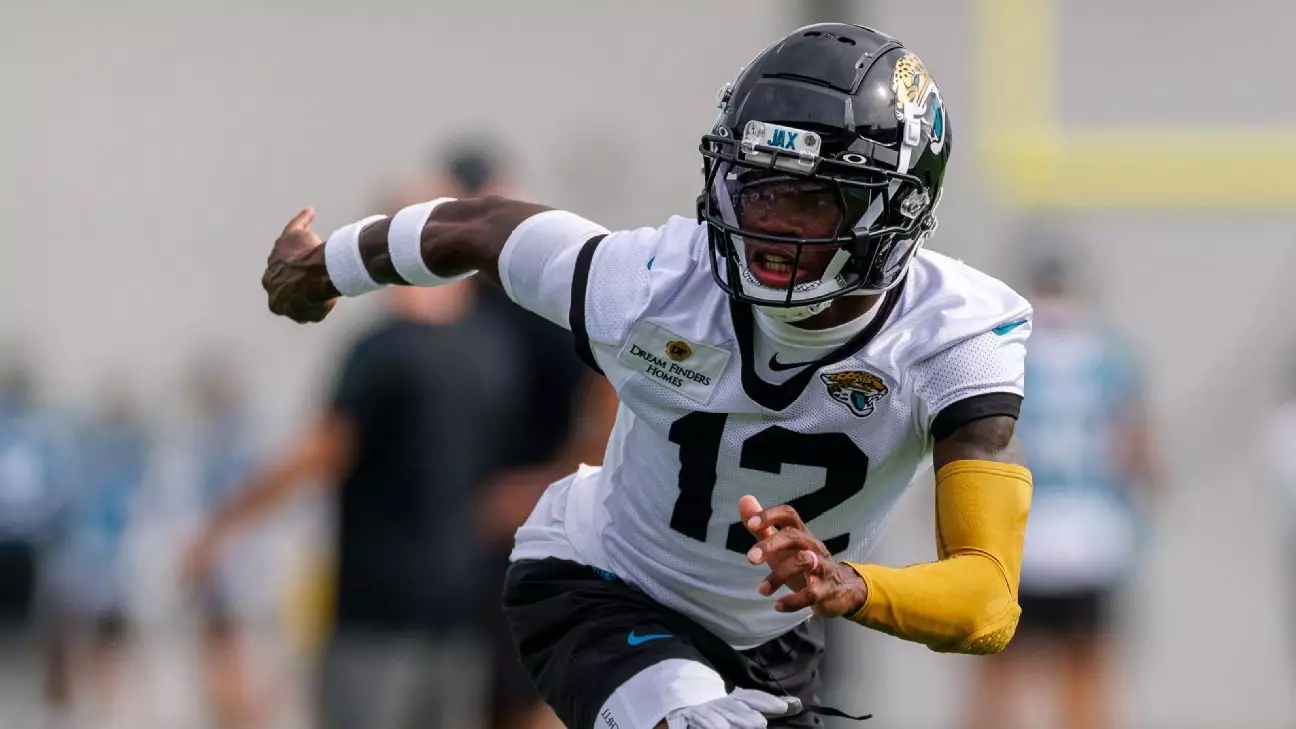In the evolving landscape of professional football, Travis Hunter’s experiment with dual-position play epitomizes the sport’s relentless pursuit of versatility at any cost. While the idea of a two-way player sparks fascination and nostalgia, it also raises critical questions about the long-term viability of such endeavors. The Jacksonville Jaguars’ approach to gradually immersing Hunter in both offense and defense reflects a cautious optimism. But beneath this strategy lies a deeper concern: are we sabotaging athletic excellence by expecting too much from one individual? The traditional separation of roles in football exists for a reason, primarily to maximize specialization and performance. Hunter’s journey illustrates the perilous balancing act of attempting to be “jack of all trades,” potentially sacrificing mastery and clarity in the process.
The coaching staff’s careful design—to progressively integrate Hunter into both sides—may inadvertently emphasize the sport’s obsession with adaptability over refined skill. While initial phases zone in on mental processing rather than physical mastery, the overarching message seems to be that mere exposure suffices. It neglects the vital truth that true competence on the gridiron is rooted in deliberate focus. Pushing a player into dual roles without sufficient time to master each condition can lead to mental overload, fatigue, and ultimately, underperformance. The risk is that we’re glorifying the novelty rather than ensuring sustainable excellence. In doing so, we threaten the foundational understandings that make specialized players exceptional.
The Myth of the “Unfazed” Athlete
The narrative surrounding Hunter’s mental toughness and “unfazed” attitude appears to gloss over a potentially problematic assumption—that mental resilience alone can compensate for the intense cognitive and physical demands of playing multiple roles. Coaches tout his composure, yet the reality of mastering two different playbooks—each with distinct terminology, schemes, and instincts—is an enormous challenge. It’s not enough to expect players to adapt on the fly; the mental architecture must be built over years, not weeks.
This illusion of seamless adaptability feeds into a larger myth: that players can effortlessly switch gears without compromising either skill set or mental clarity. Such optimism ignores the deep specialization that has become the hallmark of success at the NFL level. Hunter’s case might be compelling as a recent spectacle, but it risks serving merely as entertainment rather than a blueprint for development. The heavy cognitive load placed on him raises concerns about burnout and inconsistency. If the sport continues to prioritize versatility for its own sake, it may diminish the quality of play, undermining the very standards of excellence we cherish.
The Consequence of Glamorizing the “Two-Way Player”
By bending over backwards to accommodate Hunter’s dual responsibilities, the Jaguars—and by extension, the league—may be contributing to a dangerous glorification of overextension. It’s a seductive narrative that one star athlete can excel in multiple domains, but history tells us otherwise. Chuck Bednarik, often cited as the last true two-way player, played in a vastly different era, dominated by different expectations. Modern football’s specialization has created a level of strategic depth that makes such roles nearly obsolete.
What’s truly alarming is that this experiment risks normalizing the idea that players should be “superhuman,” juggling roles that demand vastly different skills, physicality, and mental focus. Such standards are unfair and unsustainable, exposing players to higher injury risks and mental health tolls. While Hunter’s effort is laudable, it also forces us to question whether this pursuit of versatility is a productive evolution or a symptom of deeper issues—such as franchise desperation, short-term thinking, or misguided innovation. This focus could detract from developing specialized skills that have historically defined greatness in the NFL, ultimately undermining the sport’s core integrity.
The Center-Left Perspective: Balancing Innovation and Tradition
From a center-wing liberal standpoint, it’s essential to recognize that innovation must serve the game’s long-term health, not just fleeting novelty. While embracing change and pushing boundaries are intrinsic to sports evolution, they must not come at the expense of player welfare and quality of performance. The NFL should question whether chasing “the next big thing”—like the two-way player—is truly forward-thinking or simply an impatience with the sport’s existing mastery-based framework.
This perspective advocates for scouting, training, and developing athletes who can excel within clearly defined roles, ensuring that the game’s strategic depth and tradition aren’t sacrificed on the altar of spectacle. Talent development programs should prioritize specialization and mental clarity, rather than encouraging athletes to stretch themselves thin across multiple domains. Playing both ways might seem exciting initially, but history and common sense suggest that genuine mastery in one area yields far greater value—both for players and fans—than the illusion of overextended versatility. It’s time to consider whether the relentless pursuit of novelty aligns with the sport’s long-term intellectual and physical integrity or whether it’s merely a superficial attempt to create headlines in an era of constant media spectacle.


Leave a Reply